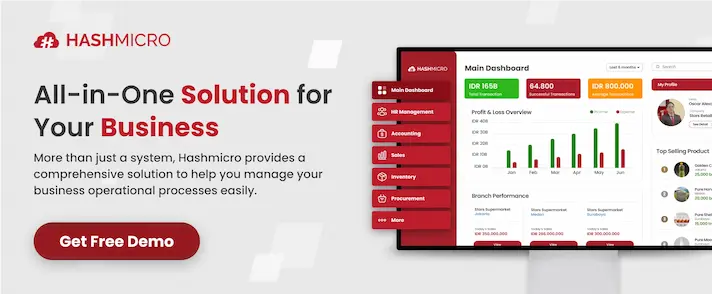Enterprise Asset Management (EAM) is a critical function for businesses across industries, ensuring the optimal management, control, and maintenance of assets throughout their lifecycle. In today’s competitive landscape, organizations are increasingly turning to EAM software to drive efficiency, reduce costs, and unlock new opportunities.
The global EAM software market is experiencing rapid growth, with a projected value of USD 5.5 billion by 2026 and a compound annual growth rate (CAGR) of 8.7%. This surge is fueled by several key factors:
- The shift from traditional asset management methods to modern EAM software, which offers a more comprehensive and integrated approach to asset lifecycle management.
- The adoption of Software-as-a-Service (SaaS) based EAM solutions, providing organizations with scalability, flexibility, and remote access capabilities.
- The increasing use of Internet of Things (IoT) platforms, enabling real-time asset monitoring, predictive maintenance, and data-driven decision-making.
- The growing need to eliminate compliance overheads and ensure adherence to industry regulations.
- The convergence of technologies such as Artificial Intelligence (AI), Intelligent Automation, and mobility usage, driving innovation and transformative capabilities.
- The impact of the COVID-19 pandemic, which has accelerated the adoption of cloud-based EAM solutions as businesses embrace remote operations and digital transformation.
EAM software development companies, like DreamzTech, are at the forefront of empowering businesses with custom asset tracking solutions, industry-specific applications, and seamless integration with Enterprise Resource Planning (ERP), accounting, IoT, and other systems. Industries that have witnessed significant benefits from EAM software include manufacturing, aviation, healthcare, and more.
Real-world examples and success stories demonstrate how EAM software implementation has transformed enterprise asset management, driving operational excellence, cost savings, and improved asset performance. As the industry continues to evolve, EAM software is poised to integrate emerging technologies such as AI, IoT, and machine learning, further enhancing its capabilities and enabling organizations to meet future enterprise needs.
Introduction to Enterprise Asset Management (EAM) software and its significance.
Enterprise Asset Management (EAM) software plays a crucial role in the efficient maintenance, control, and optimization of assets throughout their lifecycle. By implementing EAM software, organizations can increase productivity and reduce costs, ultimately improving their bottom line.
EAM software offers a comprehensive approach to asset management, covering various aspects such as maintenance, management, analytics, and compliance. It provides organizations with a 360-degree view of their assets, enabling better tracking, maintenance, and utilization.
The shift from legacy asset management methods to modern EAM software is driven by the need for a more efficient and streamlined approach to asset management. The adoption of EAM software allows businesses to leverage advanced functionalities and tools to enhance asset performance and maximize returns.
SaaS-based EAM solutions are gaining popularity due to their scalability, flexibility, and remote access capabilities. These cloud-based solutions enable organizations to access and manage their asset data from anywhere, at any time.
Furthermore, the increasing usage of IoT platforms and devices in asset management has revolutionized the capabilities of EAM software. IoT connectivity allows for real-time asset monitoring, predictive maintenance, and data-driven decision-making.
Compliance with industry regulations and standards is a critical factor driving the adoption of EAM software. Organizations need to ensure that their assets meet compliance requirements to avoid penalties and maintain operational efficiency.

Understanding EAM Software
EAM software, also known as Enterprise Asset Management software, is a comprehensive solution designed to effectively manage assets throughout their entire lifecycle, from acquisition to disposal. It offers core functionalities that include asset tracking, maintenance scheduling, work order management, and analytics. By providing these essential features, EAM software enables organizations to streamline asset management processes and optimize asset performance.
One of the key distinctions between EAM software and other asset management systems such as CMMS (Computerized Maintenance Management System), ITAM (IT Asset Management), and ERP (Enterprise Resource Planning) is its holistic and specialized approach to asset management. While systems like CMMS focus primarily on maintenance, EAM software goes beyond that and encompasses various aspects of asset management, including maintenance, analytics, compliance, and more.
With EAM software, businesses can have a comprehensive view of their assets, allowing for better tracking, maintenance, and utilization. By leveraging advanced analytics capabilities, organizations can gain valuable insights into asset performance, identify potential issues, and make data-driven decisions to optimize asset management processes.
With the implementation of EAM software, businesses can benefit from improved operational efficiency, reduced downtime, enhanced compliance management, and increased asset lifecycle. By having a centralized system that brings together all asset-related data and functionalities, organizations can effectively manage and maintain their assets, ensuring they are operating at peak performance.
The Benefits of Implementing EAM Software
Implementing EAM software offers several benefits to organizations, including enhanced tracking and management of assets across multiple locations. EAM software provides a centralized platform that allows businesses to effectively monitor and control their assets, ensuring efficient asset management throughout the organization.
One of the key advantages of EAM software is its ability to streamline maintenance processes. By scheduling and automating maintenance tasks, organizations can reduce asset downtime and optimize asset utilization. This not only increases operational efficiency but also extends the lifespan of assets, resulting in lower expenses associated with asset maintenance and replacement.
Furthermore, EAM software helps organizations ensure compliance with industry regulations and standards. By maintaining accurate records and tracking asset-related data, businesses can minimize the risk of non-compliance and potential penalties. Compliance is crucial in industries such as healthcare, aviation, and manufacturing, where strict regulations govern asset management.
Overall, implementing EAM software can result in significant cost savings, improved asset performance, and enhanced operational efficiency. With the ability to track and manage assets effectively, organizations can make data-driven decisions, prevent costly breakdowns, and optimize asset utilization for maximum productivity.

Enhanced Tracking and Management of Assets
The inclusion of enhanced tracking functionalities in EAM software allows organizations to have real-time visibility and control over their assets. This visibility extends across multiple locations, making it easier to monitor and manage assets remotely. By capturing and tracking asset data, organizations can identify potential issues, track asset performance, and plan maintenance activities more effectively.
Key Features of EAM Software
EAM software offers a range of key features that are vital for effective asset management in modern businesses. These features include:
-
- Managing Assets Across Different Geographical Locations:
EAM software allows organizations to easily track and manage their assets, regardless of their geographical locations. This feature ensures that businesses have centralized control and visibility over their assets, even if they are spread across multiple sites or regions.
-
- Gaining Insights into Asset Performance and Maintenance:
With EAM software, businesses can access real-time data and analytics to monitor asset performance and track maintenance activities. This valuable information helps organizations identify potential issues, optimize asset utilization, and implement proactive maintenance strategies to maximize asset lifespan.
-
- Flexible Customization to Meet Specific Business Needs:
EAM software offers flexibility and customization options to meet the unique requirements of different industries and businesses. Organizations can tailor the software to align with their specific asset management processes, workflows, and business goals, ensuring a seamless integration and optimal functionality.
In addition to these key features, EAM software provides a centralized repository for asset data, enabling efficient tracking, maintenance, and decision-making. Furthermore, it offers comprehensive reporting and analytics capabilities, empowering organizations to optimize asset performance and make data-driven decisions. The flexibility of EAM software ensures that businesses can adapt and customize the solution according to their industry-specific needs and evolving asset management requirements.
Choosing the Right EAM Software
When it comes to selecting the right EAM software for your organization, there are several factors that you need to consider. First and foremost, scalability is crucial. You want a solution that can grow with your business and accommodate your future asset management needs.
Functionality is another key aspect to evaluate. Look for EAM software that offers a wide range of features, such as asset tracking, maintenance scheduling, and work order management. The more comprehensive the functionality, the better equipped you’ll be to efficiently manage your assets.
Ease of use is also an important consideration. The software should have an intuitive interface and user-friendly navigation. This will ensure that your team can easily adopt and utilize the system without extensive training or complications.
Integration capabilities are another crucial factor. Vendor neutrality is essential, as it allows you to seamlessly integrate the EAM software with your existing systems and processes. Additionally, a consultative approach from the software provider ensures a smooth integration process and effective customization to meet your specific needs.
Lastly, consider the specific industry applications of the EAM software you’re evaluating. Different industries have unique asset management requirements, and it is vital to choose a solution that caters to those needs. Real-world examples and success stories of EAM software implementation can provide valuable insights into how the software has been successfully utilized in similar industries.
Warning: Undefined array key "med" in /home/hashmicr/public_html/blog/wp-content/plugins/insert-headers-and-footers/includes/class-wpcode-snippet-execute.php(419) : eval()'d code on line 281


































